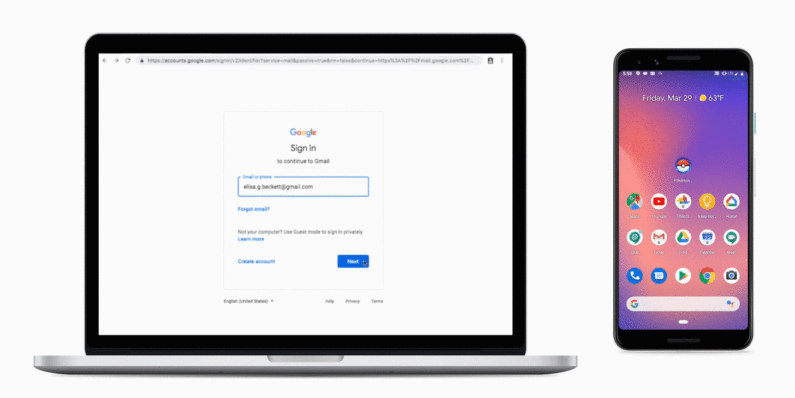
Your Android phone could soon replace your hardware security key to provide two-factor authentication access to your accounts. As the company announced at its Cloud Next conference today, it has developed a Bluetooth-based protocol that will be able to talk to its Chrome browser and provide a standards-based second factor for access to its services, similar to modern security keys.
It’s no secret that two-factor authentication remains one of the best ways to secure your online accounts. Typically, that second factor comes to you in the form of a push notification, text message or through an authentication app like the Google Authenticator. There’s always the risk of somebody intercepting those numbers or phishing your account and then quickly using your second factor to log in, though. Because a physical security key also ensures that you are on the right site before it exchanges the key, it’s almost impossible to phish this second factor. The key simply isn’t going to produce a token on the wrong site.
Because Google is using the same standard here, just with different hardware, that phishing protection remains intact when you use your phone, too.

Bluetooth security keys aren’t a new thing, of course, and Google’s own Titan keys include a Bluetooth version (though they remain somewhat controversial). The user experience for those keys is a bit messy, though, since you have to connect the key and the device first. Google, however, says that it has done away with all of this thanks to a new protocol that uses Bluetooth but doesn’t necessitate the usual Bluetooth connection setup process. Sadly, though, the company didn’t quite go into details as to how this would work.
Google says this new feature will work with all Android 7+ devices that have Bluetooth and location services enabled. Pixel 3 phones, which include Google’s Titan M tamper-resistant security chip, get some extra protections, but the company is mostly positioning this as a bonus and not a necessity.
As far as the setup goes, the whole process isn’t all that different from setting up a security key (and you’ll still want to have a second or third key handy in case you ever lose or destroy your phone). You’ll be able to use this new feature for both work and private Google accounts.
For now, this also only works in combination with Chrome. The hope here, though, is to establish a new standard that will then be integrated into other browsers, as well. It’s only been a week or two since Google enabled support for logging into its own service with security keys on Edge and Firefox. That was a step forward. Now that Google offers a new service that’s even more convenient, though, it’ll likely be a bit before these competing browsers will offer support, too, once again giving Google a bit of an edge.


